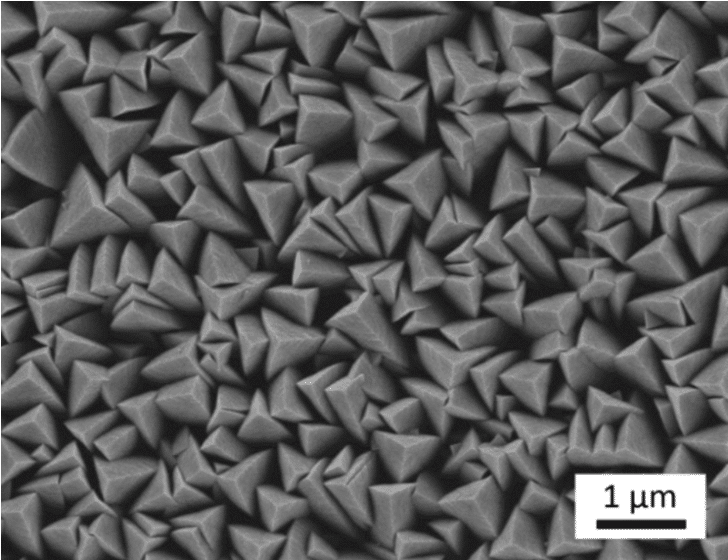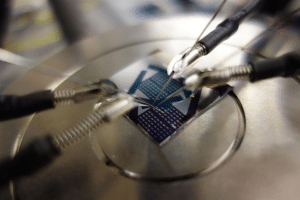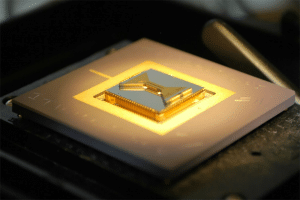
Preparation of titanium nitride (TiN) thin films by ALD process

pass (a bill or inspection etc)Atomic Layer Deposition (ALD) processpreparedTitanium Nitride (TiN) Thin FilmsTiN films are characterized by high hardness, excellent wear resistance, high corrosion resistance, low coefficient of friction, high temperature stability, electrical conductivity, excellent biocompatibility, and aesthetic decorative properties. These excellent properties have led to a wide range of applications for TiN films in a variety of fields such as machining, electronics and semiconductors, decoration, biomedical, optics and aerospace. Although the ALD process has the disadvantages of lower deposition rates and higher equipment costs, its advantages in preparing high quality TiN films are unrivaled.
Properties of titanium nitride films
- High hardness: TiN films have a Vickers hardness of approximately 1800-2100 HV, providing excellent wear resistance.
- Excellent wear resistance: TiN films significantly improve the wear resistance of the substrate for high friction and high wear environments.
- High corrosion resistance: TiN films have good resistance to many chemical reagents, especially in acidic and alkaline environments.
- Low coefficient of friction: The coefficient of friction is about 0.4-0.6, which helps to reduce wear and improve lubricity.
- High-temperature stability: TiN films have good chemical and physical stability at high temperatures, and can withstand temperatures of up to 600-800°C.
- Electrical conductivity: TiN films have good electrical conductivity with a resistivity of about 25-30 μΩ-cm.
- Excellent biocompatibility: TiN films are non-toxic and biocompatible, making them suitable for biomedical coatings.
- Decorative: TiN film has a golden yellow luster and is not easy to fade, commonly used in decorative coatings.
Atomic Layer Deposition (ALD) process
Atomic Layer Deposition (ALD) is a thin film deposition technique based on a self-limiting chemical reaction, in which the thickness and composition of the film is precisely controlled by the stepwise introduction of precursor gases.The ALD process is particularly suited for the preparation of high-quality, ultrathin, and homogeneous TiN films.
Process steps for the preparation of TiN thin films by ALD
1. Substrate surface cleanliness: Ensure that the surface of the substrate is clean and free of organic matter and oxides.
2. Precursor introduction: Alternate introduction of titanium precursor and nitrogen precursor gases.
- Commonly used titanium precursors: titanium tetrachloride (TiCl₄), titanium tetraisopropoxide (Ti(OiPr)₄).
- Commonly used nitrogen precursors: ammonia (NH₃), nitrogen (N₂).
3. Reaction steps:
- Titanium precursor adsorption: Titanium precursors are introduced into the reaction chamber at a specific temperature to adsorb onto the surface of the substrate.
- Purging: Purging with an inert gas (e.g., nitrogen) to remove excess titanium precursors and by-products.
- Nitrogen precursor reaction: Nitrogen precursor is introduced and reacts with the titanium precursor adsorbed on the surface of the substrate to form a titanium nitride film.
- Re-purge: Purge with inert gas to remove excess nitrogen precursors and by-products.
4. Cyclic deposition: Repeat the above steps, layer by layer, until the desired film thickness is achieved.
vantage
- Precise control of thickness: Only one atomic layer is deposited per reaction for precise control of film thickness.
- High uniformity: the film is evenly distributed over complex shapes and large substrates.
- Low-temperature process: Lower deposition temperature, suitable for temperature-sensitive substrates.
- High-quality film: Dense film, high purity, few defects.
drawbacks
- Low deposition rate: only one atomic layer is deposited per cycle, and the overall deposition rate is slow.
- Complex and costly equipment: requires precise control of gas flow and temperature, and higher equipment costs.
We offer Atomic Layer Deposition (ALD) OEM Customization Services, Feel free to leave a message to inquire.
Electron Beam Evaporation Coating (EB-PVD) Processes and Advantages and Disadvantages
Processes and Advantages of Electron Beam Evaporation Coating (EB-PVD) Electron Beam
Exploring 4 applications of silicon nitride thin-film windows in bioscience
This paper will describe the properties and advantages of silicon nitride thin film windows and discuss four common applications in the life sciences.
Polysilicon Film丨Various reasons affecting wafer warpage
Polycrystalline silicon thin film丨influence on the warpage of silicon wafers In many cases, it should be



.jpg)